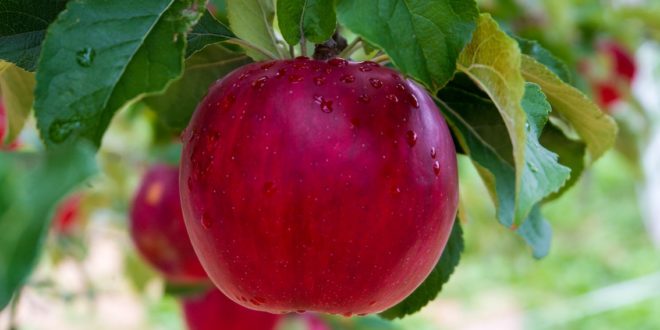The season of tree planting is upon us, and what could be more exciting than an apple tree in your own backyard! But apple trees are long-lived, and making the decision about just which variety to grow can create angst among even the most relaxed of gardeners.
To help you decide which variety you might grow, think back to the last time you tasted an old fashioned orchard apple. Forget the highly polished, uniformly-shaped, generic supermarket apples which are more a sugar-hit than a delight to the senses, and surf your memories for something from childhood. Yes, childhood – because that’s how long it’s likely been since you last crunched on an apple that wasn’t bred almost entirely for sweetness.
Old fashioned, home-grown fruit trees, especially apples, are now referred to as ‘heritage varieties’, and have become hugely popular for both their unique flavours and their remarkable resistance to an ever-increasing range of pests and diseases. Most heritage apple varieties have been around since before the 1930s – that is, before orcharding on an industrial scale was established.
With industrial-scale orcharding, apples were suddenly being bred for characteristics that had as much to do with marketability and cost-effectiveness as they did flavour. These new varieties had to stand up to long-distance transport, many months of cool storage, and long supermarket shelf-life. The trees didn’t need to be robust when it came to defending themselves against pest and disease, because industrial scale orchards could deal to these problems with sprays. The new mono-culture apples didn’t have to search for their nutrients through the development of deep, strong roots – they had their sustenance delivered ‘to their door’ through the application of chemical fertilizers. They didn’t need to be drought resistant, either, because irrigation was on-tap 24/7. As for ‘sweetness’, it often came ahead of flavour because it’s what customers with little other understanding of an apple, craved.
What all this means for the gardener, today, is that purchasing a non-heritage apple tree can bring with it a raft of problems (and less deliciousness). You will need to provide a non-heritage apple tree with year-long attention, and a routine of spraying and watering. The fruit is unlikely to store well (unless you have a cool-store on hand!), and once mature, it may need to be picked immediately, and all at once. Choose a heritage apple, and you’ll be saving yourself hours in maintenance, and depending on the variety, you’ll potentially be growing fruit that is nutritionally better for you.
If heritage apple trees offer so much to the home gardener, you may well ask yourself “Why isn’t everyone growing them?” The answer isn’t surprising. We are so familiar with supermarket apples (individually tagged with their own non-compostable, sticky plastic label), when we go to purchase an apple tree, we automatically ask for one of these varieties. We’re much less likely to do our own homework and hunt out a nursery providing heritage apples.
This planting season, if you decide to invest in a heritage apple, hop online to check out where they can be purchased. A word of warning – be sure to select a nursery in your own region, or in a region that is climatically similar to your own. Heritage apple trees have grown, and thrived, for decades in their own local environments. They have become specially adapted to heat or chill, local soil types, and moisture levels. Taking them out of their comfort zones may mean you are asking for trouble. The good news, however, is heritage nursery growers are inevitably enthusiasts. They know their trees, and will be more than happy to give you an honest answer as to whether or not a variety will grow well in your area.
This season, treat yourself to a trouble-free heritage apple tree – and prepare to taste the difference!










Join the Discussion
Type out your comment here:
You must be logged in to post a comment.